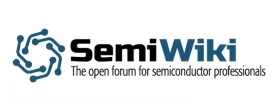Key Takeaways from the TSMC Technology Symposium Part 2
In Part 1, we reviewed four of the highlights of the recent TSMC Technology Symposium in San Jose. This article details the “Final Four” key takeaways from the TSMC presentations, and includes a few comments about the advanced technology research that TSMC is conducting.
(4) The 7nm node will immediately bifurcate into two technology offerings.
As mentioned in Part 1 of the symposium review, TSMC is expanding their focus to address a wider set of application markets. N7FF will be introduced with mobile and high-performance computing offerings from the start, with a corresponding design enablement “platform” releases for different markets.
Historically, the 55nm, 40nm, 28nm, and 16nm nodes have indeed been defined with multiple variants, and have continued to evolve beyond the initial offering -- e.g., the 55ULP, 40ULP, 28HPC+, and 16FFC technology options mentioned in Part 1. (TSMC indicated that the 10nm node will also subsequently receive an ultra-low power ULP release.)
To read the full article, click here
Related Semiconductor IP
- 12-bit, 400 MSPS SAR ADC - TSMC 12nm FFC
- General use, integer-N 4GHz Hybrid Phase Locked Loop on TSMC 28HPC
- Process/Voltage/Temperature Sensor with Self-calibration (Supply voltage 1.2V) - TSMC 3nm N3P
- 25MHz to 4.0GHz Fractional-N RC PLL Synthesizer on TSMC 3nm N3P
- USB 4.0 V2 PHY - 4TX/2RX, TSMC N3P , North/South Poly Orientation
Related Blogs
- Key Takeaways from the TSMC Technology Symposium Part 1
- Cadence Recognized as TSMC OIP Partner of the Year at 2025 OIP Ecosystem Forum
- Word from the Source - USB-IF on USB Type-C and Alternate Modes (Jeff Ravencraft Interview - Part 2)
- TSMC Technology Symposium: Process Status
Latest Blogs
- Enabling End-to-End EDA Flow on Arm-Based Compute for Infrastructure Flexibility
- Real PPA improvements from analog IC migration
- Design specification: The cornerstone of an ASIC collaboration
- The importance of ADCs in low-power electrocardiography ASICs
- VESA Adaptive-Sync V2 Operation in DisplayPort VIP
